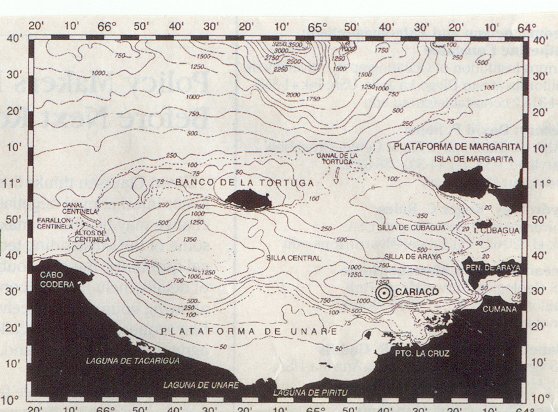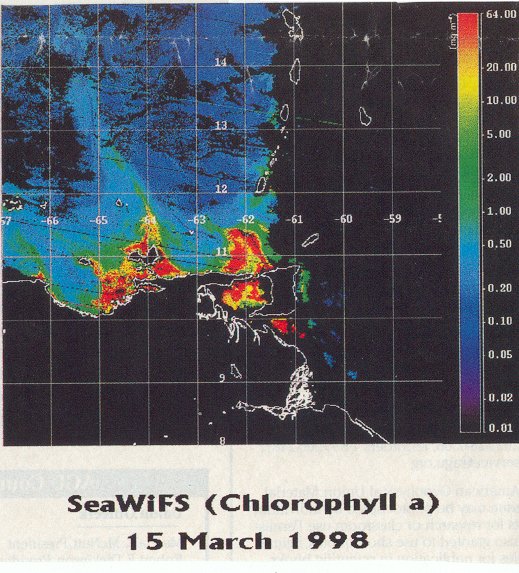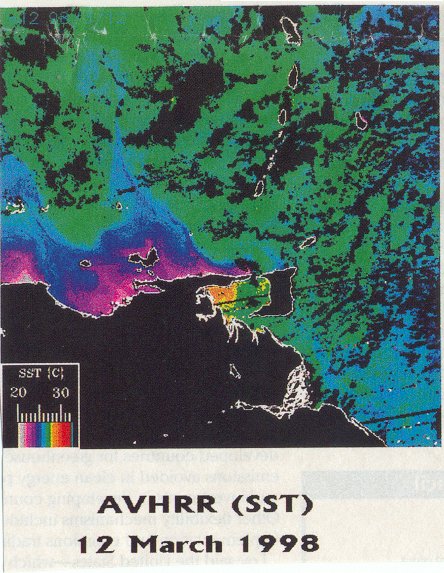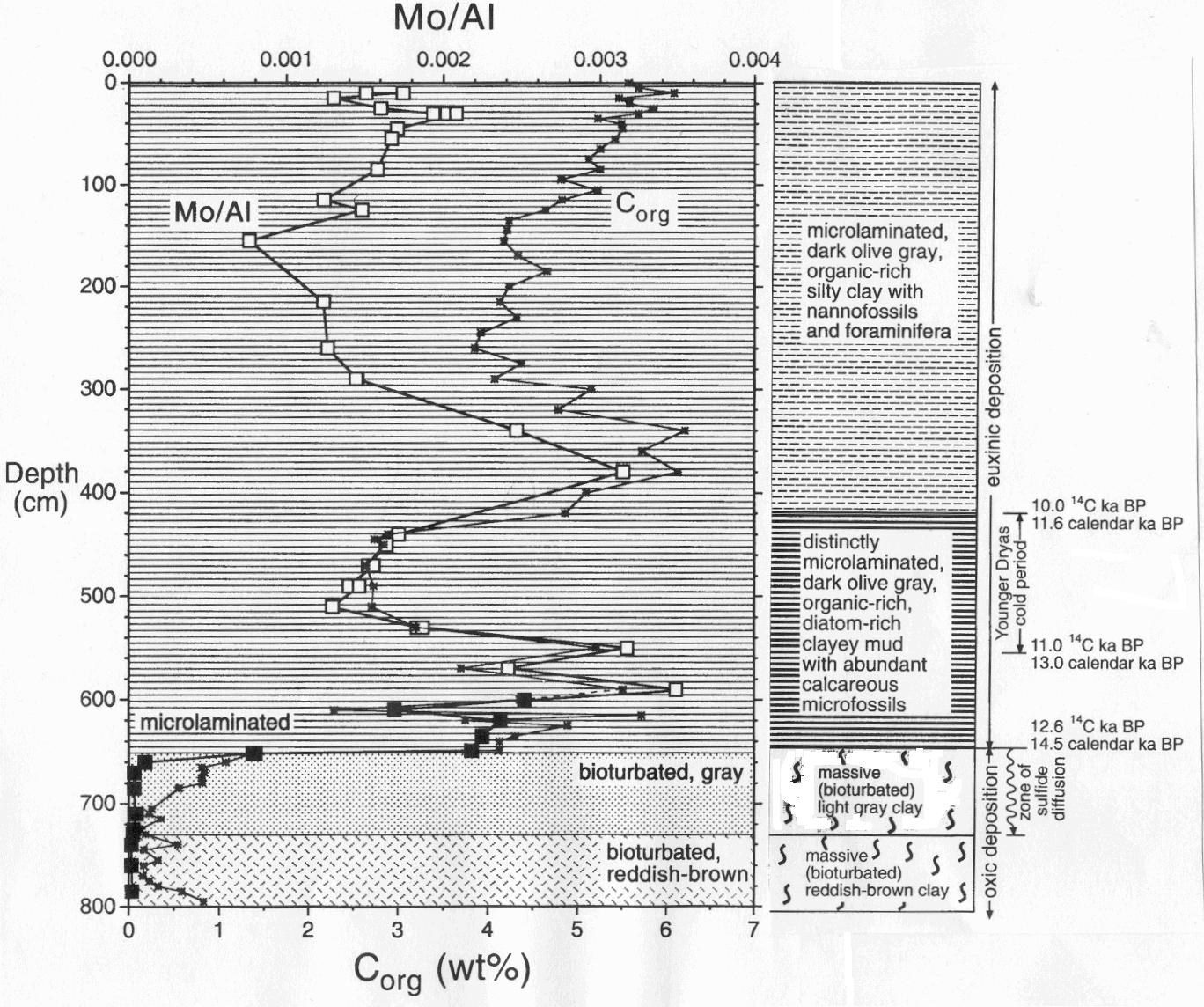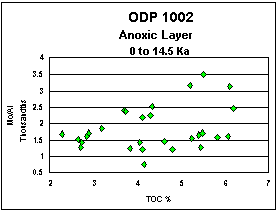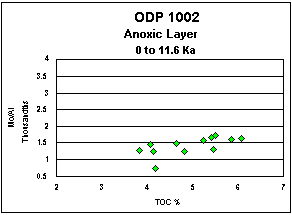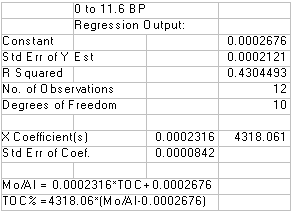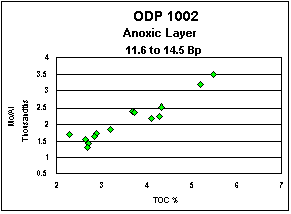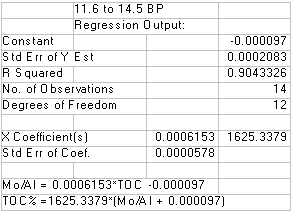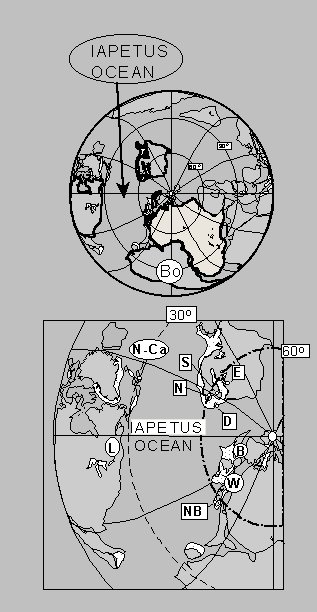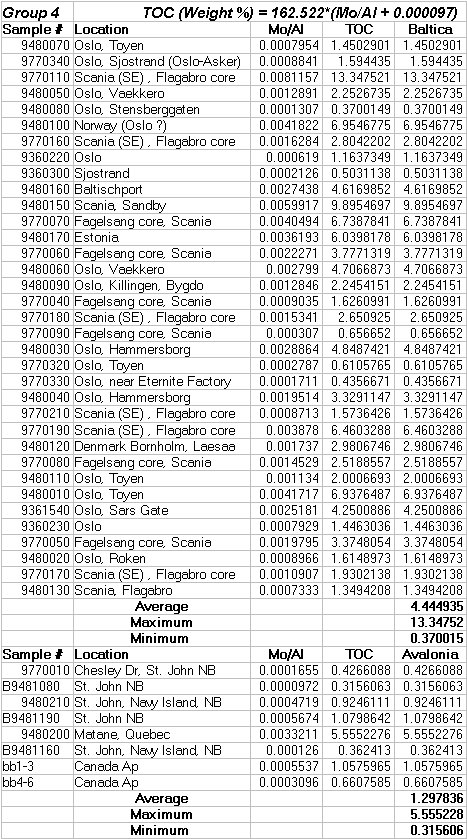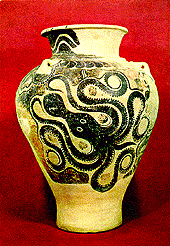ABSTRACT
Due to diagenetic changes, low rank metamorphism, outcrop weathering etc., it essentially impossible or even misleading to estimate the organic content of carbon and sulfur in ancient. indurated shales from outcrop samples by simple C or S chemical analysis (Berner and Raiswell, 1983) However, chemical analysis of recent sediments in the Cariaco Trench (Lyons and others, 2001, and Peterson and others, 2000) suggest that for certain types of anoxic sediments (type IV of Quinby-Hunt and Wilde, 1996: high V, Mo, Co and low Mn), normalized Mo to Al content correlates well with Total Organic Carbon (TOC). Dated anoxic trench sediments show two regressions with the differences presumably related to the rate of deposition:
I. Microlaminated dark olive gray silty clay (0 to 11.6 Kyrs BP)
TOC% = 4318.06*(Mo/Al-0.0002676); n = 12 R2 = .43
Mean Rate of Deposition 36.2 cm/Kyr
II. Distinctly microlaminated dark olive gray clayey mud (11.6 to 14.5 Kyrs BP)
TOC % =1625.22*(Mo/Al+0.000097); n = 14 R2 = .90
Mean Rate of Deposition = 75.9 cm/Kyr
Carbon fluxes from sediment traps in the trench (Muller-Karger and others, 2000) suggest that much of the carbon is formed by chemosynthesis at the oxic/anoxic boundary. Thus carbon would tend to be preserved below the anoxic boundary. We use the conservative correlation II from modern sediments to estimate the initial carbon content in certain anoxic shales where initially the overlying waters during deposition were anoxic enough to impede oxidation of organic matter during diagenesis and eventual induration. As is well known, many Paleozoic shales probably met this condition. We have evaluated Group IV sediments (Mn < 260 ppm, Fe < 36000 ppm, V > 330 ppm) in our Black Shale data base (www.dnai.com/patwilde/bshales.html) and report on the estimates of initial TOC using the Mo/Al correlation for the Lower Ordovician of the Iapetus Ocean (Baltica and Avalonia plates). Values of TOC, using the conservative regression II, were
Baltica: range 0.43-13.0%; mean 4.44%; n=27 and
Avalonia: range 0.3-5.5%; mean 1.3%; n=8.
Calculation of such values for the appropriate rocks in the record combined with paleogeograpy and paleoecology should be valuable in estimations of carbon synthesis in ancient oceans and initial hydrocarbon potential of reservoir rocks.
REFERENCES
Berner, R.A. and Raiswell, R., 1983, Burial of organic carbon and pyrite sulfur in
sediments over Phanerozoic time: a new theory: Geochimica et Cosmochimica
Acta v. 47, no. 5, p. 855-862.
Lyons, T. W., Werne, J. P., and Hollander, D. J. 2001, Contrasting sulfur geochemistry and Fe/A/ and Mo/Al ratios across the last oxic-to-anoxic transition in the Cariaco Basin, Venezuela, submitted for publication: Chemical Geology special issue: Isotopic Records of Microbially Mediated processes.
Muller-Karger, F., Varela, R., Thunell, R., Scranton, M., Bohrer, R., Taylor, G., Capelo, J., Astor, Y., Tappa, E., Ho, Tung-Yuan, Iabichella, M., Walsh, J. J. and Diaz, J. R., 2000, Sediment Record linked to surface processes in the Cariaco Basin: EOS, v. 81, p. 529 and p. 535.
Petterson, L. C., Haug, G., Murray, R. W., Yarincik, K. M., King, J. W., Bralower, T. J., Kameo, K., Rutherford, S. D. and Pearce, R.B., 2000, Late Quaternary stratigraphy and sedimentation at Site 1002, Cariaco Basin (Venezuela), in R. M. Leckie, H. Sigurdsson, G. D, Acton and G. Draper (eds.), Proc. ODP, Sci. Results 165, Ocean Drilling Program, College Station, Texas, p. 85-99.
Quinby-Hunt, M. S. and Wilde, P., 1996, Depositional environments of calcic marine black shales: Economic Geology, vol. 91, p. 4-13.
Yarincik, K. M., Murray, R. W., Lyons, T. W., Peterson, L. C., and Haug, G. H., 2000, Ocygenation history of bottom waters in the Cariaco Basin, Venezuela, over the past 578,000 years: results from redox sensitive metals (Mo, V, Mn, Fe): Paleoceanography, v. 15, p. 593-604).
